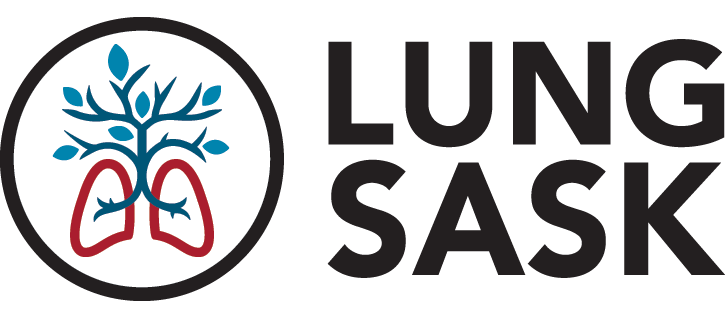Non-invasive Ventilation (NIV)
What Is Non-Invasive Ventilation and Why Is It Used?
Non-invasive ventilation, or NIV, is a way to help you breathe better without needing a breathing tube. It uses a special mask and machine to gently push air into your lungs. This helps your body get more oxygen in and remove extra carbon dioxide (CO2) — a waste gas your body naturally produces.
What Is Hypercapnia?
Hypercapnia (also called CO2 retention) happens when your body can’t get rid of enough carbon dioxide, and it starts to build up in your blood. This can be dangerous and, if not treated, may lead to serious health issues or even death.
Some people with chronic lung conditions like COPD or sleep apnea have trouble exhaling fully, which can cause CO2 to build up. Giving too much oxygen to someone with COPD can sometimes make this worse — that’s why it's important to use oxygen only as prescribed.
If you have COPD and are at risk for CO2 retention, your oxygen levels (measured with a small device on your finger called a pulse oximeter) should usually stay between 88% and 92%. You should only use oxygen if your levels drop below 88%, and only as directed by your healthcare provider.
Signs of High Carbon Dioxide (Hypercapnia)
If CO2 builds up too much, you might notice:
-
Feeling short of breath
-
Headaches
-
Feeling very tired or sluggish
-
Confusion or feeling disoriented
-
Trouble thinking clearly
-
Mood changes like depression or paranoia
-
Seizures (in severe cases)
Tell your healthcare provider right away if you notice these symptoms.
Who Should Use NIV?
NIV is often recommended if you have:
-
Severe COPD with CO2 buildup
-
Obstructive sleep apnea (especially if oxygen levels drop or CO2 is high)
-
Obesity hypoventilation syndrome (OHS)
-
Muscle or nerve conditions that affect breathing (like ALS or muscular dystrophy)
Types of Non-Invasive Ventilation (NIV)
There are two main types of machines used to deliver NIV:
1. CPAP (Continuous Positive Airway Pressure)
-
Delivers a steady flow of air at one constant pressure
-
Often used for obstructive sleep apnea
-
Helps keep your airways open while you sleep
2. BiPAP (Bi-Level Positive Airway Pressure)
-
Gives two different air pressures: a higher pressure when you breathe in and a lower pressure when you breathe out
-
Makes it easier to take a deep breath and get rid of CO2
-
Often used for people with COPD, sleep apnea, or high CO2 levels
Sometimes, oxygen is added to either CPAP or BiPAP if needed. Your doctor or sleep specialist will help set the right machine and pressure levels for you.
How NIV Can Help
Using NIV regularly has many benefits, especially if you have COPD:
✅ Improves breathing and sleep
✅ Helps your body get rid of CO2
✅ Reduces shortness of breath
✅ Decreases the risk of hospital stays
✅ May help you live longer
✅ Can improve your overall lung function
It’s especially helpful if you’ve recently had a COPD flare-up, as it can shorten your hospital stay and help you recover more quickly.
Getting Started with NIV
Starting NIV can feel overwhelming, but you’ll get support along the way.
What to Expect:
-
You may have a sleep test or nighttime oxygen testing to check your oxygen and CO2 levels.
-
A respirologist or sleep doctor will prescribe the appropriate machine/therapy for you.
-
A sleep health care professional will help choose the best fitting mask.
-
The mask may feel strange at first — start slowly and give yourself time to adjust.
-
You may begin using the machine in hospital, in a sleep lab, or at home depending on your needs.
💡Tip: Many people start by using NIV for short periods while awake, then gradually build up to using it through the night.
Caring for Your NIV Equipment
Taking care of your machine and mask helps it work better and keeps you healthy. Read more about Caring for your Equipment.
How Will My Progress Be Monitored?
Your respirologist, sleep specialist, respiratory therapist, or CPAP Company Health Professional should:
-
Monitor your oxygen and CO2 levels
-
Adjust your machine settings if needed
-
Make sure your mask fits well and is comfortable
-
Follow up regularly to check how things are going
Who Might Not Be Able to Use NIV?
NIV is safe for most people, but it may not be the right fit if you:
-
Have severe anxiety or claustrophobia (fear of wearing the mask)
-
Have trouble removing the mask by yourself
-
Have very unstable medical conditions
-
Have facial injuries or deformities that prevent a good mask seal
If NIV isn’t right for you, your care team will talk about other options.
Additional Support
If you're starting NIV therapy, it can take a little time to get used to the machine and mask. Respiratory therapists and nurses can help you adjust and answer any questions you have.
Talk to your healthcare team if:
-
You're unsure about your oxygen levels
-
You feel uncomfortable using your machine
-
You're noticing new or worsening symptoms
Things to Keep in Mind
❗ NIV is not a cure for COPD, but it can help you feel better and breathe easier.
❗ You’ll need to use it consistently — at least 5 hours each night for at least 3 months to feel the full benefits.
❗ NIV is not usually recommended if you have mild COPD or no signs of CO2 buildup.
Final Notes
NIV is a safe, non-invasive way to help your body rest, breathe more easily, and remove excess carbon dioxide. When used properly, it can greatly improve your quality of life — especially if you're living with COPD or another chronic lung condition.
